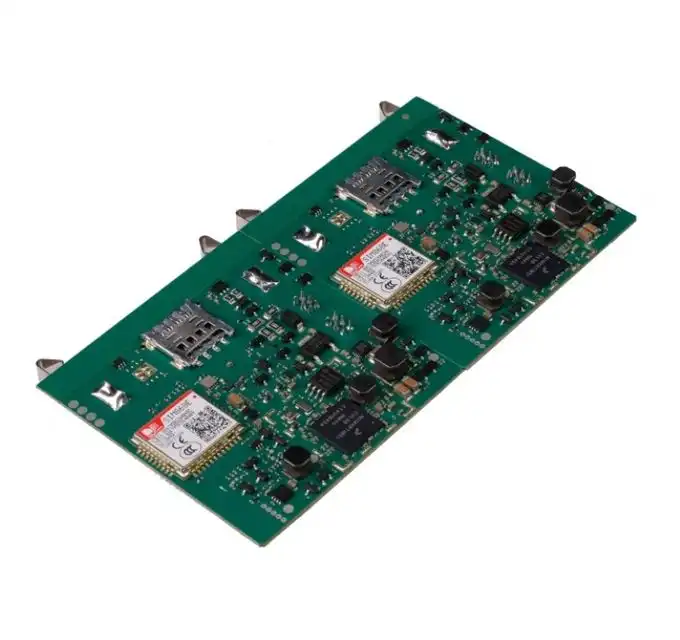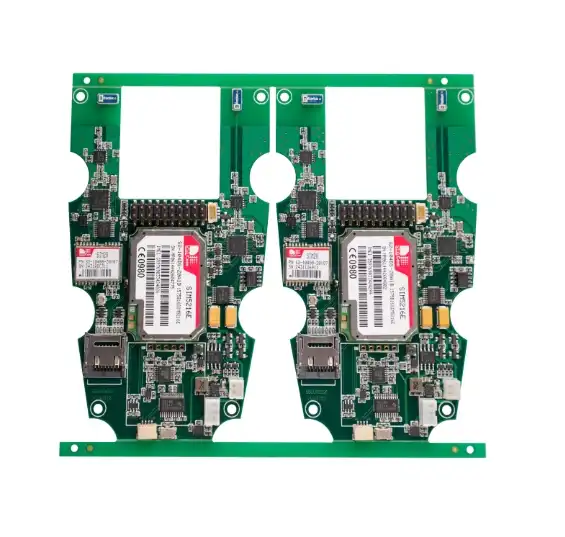The Importance of PCB Quality Control in Manufacturing
PCB Quality Control plays a pivotal role in the electronics manufacturing industry. As the backbone of modern electronic devices, printed circuit boards require meticulous attention to detail and stringent quality standards. Implementing effective quality control measures ensures that PCBs meet the required specifications and perform reliably in their intended applications.
Quality control in PCB manufacturing encompasses various aspects, including material selection, design verification, fabrication processes, and assembly techniques. By focusing on these elements, manufacturers can minimize defects, reduce waste, and improve overall product quality. This is particularly crucial for complex multilayer PCBs and high-density interconnect (HDI) boards that demand precision and reliability.
Moreover, PCB Quality Control is not just about detecting defects; it's about preventing them from occurring in the first place. This proactive approach involves continuous monitoring of production processes, regular equipment calibration, and ongoing training of personnel. By implementing these practices, manufacturers can achieve consistent quality, reduce rework costs, and enhance customer satisfaction.
Key Components of Effective PCB Quality Control
An effective PCB Quality Control system comprises several key components:
- Incoming material inspection
- Design for manufacturability (DFM) checks
- In-process inspections
- Automated optical inspection (AOI)
- X-ray inspection for hidden solder joints
- Electrical testing
- Reliability testing
- Final quality assurance checks
Each of these components plays a crucial role in ensuring the overall quality of the manufactured PCBs. For instance, AOI systems can detect surface defects with high accuracy, while X-ray inspection is invaluable for identifying issues in ball grid arrays (BGAs) and other hidden solder joints. Electrical testing, including in-circuit testing (ICT) and functional testing, verifies the electrical performance of the assembled boards.
Advanced Technologies in PCB Quality Control
The landscape of PCB Quality Control is continuously evolving with the integration of advanced technologies. These innovations are revolutionizing the way manufacturers approach quality assurance in PCB production. From sophisticated inspection equipment to data-driven process control, these technologies are enhancing the accuracy, efficiency, and reliability of quality control measures.
One of the most significant advancements in PCB Quality Control is the use of artificial intelligence (AI) and machine learning algorithms. These technologies can analyze vast amounts of data from various inspection points, identifying patterns and predicting potential defects before they occur. This predictive capability allows manufacturers to take preemptive actions, reducing defect rates and improving overall product quality.
Another area where technology is making a significant impact is in the realm of 3D inspection systems. These advanced systems use multiple cameras and sophisticated software to create detailed 3D models of PCBs, allowing for more comprehensive inspection of components, solder joints, and board surfaces. This level of detail is particularly beneficial for complex assemblies and high-reliability applications.
Implementing Advanced Quality Control Technologies
Implementing advanced quality control technologies requires careful planning and integration with existing manufacturing processes. Here are some key considerations:
- Assessing current quality control processes and identifying areas for improvement
- Evaluating different technologies and their suitability for specific manufacturing needs
- Training staff on new equipment and software systems
- Integrating new technologies with existing manufacturing execution systems (MES)
- Establishing new quality metrics and performance indicators
- Continuously monitoring and optimizing the implementation of new technologies
By carefully implementing these advanced technologies, PCB manufacturers can achieve higher levels of quality control, leading to improved product reliability and customer satisfaction. Moreover, these technologies often result in cost savings through reduced rework and improved efficiency in the long run.
Establishing a Culture of Quality in PCB Manufacturing
While advanced technologies and robust processes are essential for PCB Quality Control, establishing a culture of quality within the organization is equally important. This cultural shift ensures that every employee, from design engineers to assembly technicians, is committed to maintaining high-quality standards throughout the manufacturing process.
Creating a quality-focused culture starts with leadership commitment and clear communication of quality goals. Management must prioritize quality initiatives and provide the necessary resources and training to support them. This commitment should be reflected in the company's policies, procedures, and daily operations.
Employee engagement is another crucial aspect of building a quality culture. By involving employees in quality improvement initiatives and recognizing their contributions, manufacturers can foster a sense of ownership and pride in the quality of their work. This engagement can lead to innovative ideas for process improvements and more effective problem-solving.
Continuous Improvement in PCB Quality Control
A key element of a strong quality culture is the commitment to continuous improvement. This involves:
- Regular review and updating of quality control processes
- Encouraging feedback and suggestions from employees at all levels
- Conducting root cause analysis for any quality issues
- Implementing corrective and preventive actions
- Benchmarking against industry best practices
- Investing in ongoing training and skill development
By fostering a culture of continuous improvement, PCB manufacturers can stay ahead of evolving quality challenges and maintain a competitive edge in the market. This approach not only improves product quality but also enhances operational efficiency and customer satisfaction.
Conclusion
Implementing best practices for PCB Quality Control is essential for manufacturers aiming to produce high-quality, reliable printed circuit boards. By focusing on comprehensive inspection protocols, leveraging advanced technologies, and fostering a culture of quality, PCB manufacturers can significantly enhance their production processes and end products. As the electronics industry continues to evolve, staying committed to quality control will be crucial for success. For businesses seeking a reliable PCB supplier or manufacturer, partnering with a company that prioritizes quality control throughout the manufacturing process is key to ensuring consistent, high-quality PCB products.
FAQ
What are the key steps in PCB Quality Control?
Key steps include incoming material inspection, design verification, in-process inspections, automated optical inspection (AOI), X-ray inspection, electrical testing, and final quality assurance checks.
How does advanced technology improve PCB Quality Control?
Advanced technologies like AI, machine learning, and 3D inspection systems enhance accuracy, efficiency, and predictive capabilities in quality control processes.
Why is establishing a quality culture important in PCB manufacturing?
A quality culture ensures that all employees are committed to maintaining high standards, leading to improved product reliability and customer satisfaction.
Experience Excellence in PCB Manufacturing and Assembly | Ring PCB
At Ring PCB, we pride ourselves on our comprehensive PCB manufacturing and assembly capabilities. Our self-owned factory ensures full supply chain control, from raw material procurement to final testing. We offer a wide range of services including multilayer PCB manufacturing, high-speed HDI PCB production, and turnkey PCBA solutions. With our advanced quality control measures and global certifications, we deliver high-reliability products for automotive and industrial applications. For expert PCB solutions, contact us at [email protected].
References
1. Johnson, A. (2022). "Advanced Quality Control Techniques in PCB Manufacturing." Journal of Electronics Manufacturing, 15(2), 78-92.
2. Smith, B. & Lee, C. (2021). "Implementing AI-Driven Quality Control in PCB Production." IEEE Transactions on Electronics Packaging Manufacturing, 44(3), 201-215.
3. Brown, D. (2023). "Best Practices for PCB Quality Assurance in High-Reliability Applications." Quality Engineering in Electronics, 18(4), 345-360.
4. Zhang, L. et al. (2022). "Continuous Improvement Strategies for PCB Manufacturing Quality." International Journal of Quality & Reliability Management, 39(5), 1123-1140.
5. Anderson, R. (2023). "The Impact of 3D Inspection Technologies on PCB Quality Control." Circuit World, 49(2), 67-82.





